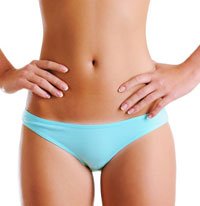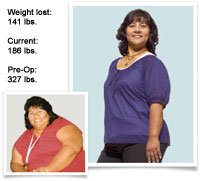An FDA Advisory Committee has recommended with an 8-2 vote that the FDA extend the currently approved use of Allergan‘s Lad Band® System, used for weight loss surgery, to patients that have a body mass index of 35 and above.
The Lap Band, an inflatable silicone tube that is placed on the upper portion of the stomach and effectively limits food intake and suppresses hunger, is currently indicated for patients with:
- BMI of 40 or higher
- BMI of 35 or higher combined with a health problem such as diabetes or high blood pressure
The change would make the Lap Band available to patients who have a BMI of 35 or higher and patients with a BMI of 30 or higher and at least one weight-related health problem.
The FDA committee’s decision came after a five-year study of 149 obese patients treated with the Lap Band that found over 80 percent lost at least 30 percent of their weight after a year.
According to an msnbc article, the FDA will make a final decision on the wider use, but the agency typically follows the advice of its advisory panels.
If granted wider usage, millions more people could be eligible for the Lap Band weight loss surgery. About 15 million Americans are candidates under the current guidelines and about 27 million more fit under the broader group, Allergan said.
To learn more about the Lap Band surgery or to discuss whether you might be a good candidate, contact Inland Cosmetic Surgery to schedule a consultation.
A recent article in the New York Times documents the expanding work schedules of dermatologists, cosmetic surgeons and other professionals who offer aesthetic treatments. Their columnist writes, “In most major cities, if you want pad Thai or a sweater dry-cleaned when most people are sleeping, there’s someone who will take care of it (for a price). These days, the same is true of beauty treatments.”
When it comes to simple beauty treatments, it’s not necessary to be open and available to patients at all times, but your doctor or aesthetician may be more flexible than you think.
Dr. Neil Sadick, an dermatologist in NYC, says his busy patients have been asking for early morning and late evening appointments; “Patients used to be able to get out of work when they wanted to, but things have changed,” so he has also changed, adjusting his office hours to be more convenient. Dr. Sadick mentions another reason to stay open longer: intense competition among doctors in the area. In New York, being available will set a doctor apart from the regular 9-5 crowd.
Extended hours may be expected in the city that never sleeps, but is it true here in Rancho Cucamonga? In many ways it is, according to Dr. Haiavy.
The doctor says: “We always strive to accommodate our patients. Knowing that some are busy with their work and careers, we do offer late hours on Wednesday and on request. We also have a group of patients that need to be seen early in the morning. I have seen patients and done Botox as early as 6 a.m. For patients traveling to the Inland Empire from out of town, we do offer services on the weekend.”
“Our Aesthetician Marlene comes in to do permanent makeup and skin care on some Saturdays. We also have events outside the office at local salons that have extended hours for patient convenience. My patients always come first and they can reach me on my cell or pager anytime of the day or night. That has been my philosophy and attitude from the start.”
Read the article “Beauty House Calls in the Wee Hours“
Hyaluronic acid fillers, such as Restylane and Juvederm, are effective at correcting smile lines, and a new study shows they also favorably affect the first impression you make on others.
The Chicago Center for Facial Plastic Surgery conducted the study with 22 participants who received injections of hyaluronic acid fillers into their nasolabial folds. Photos were taken of the patients’ faces in a relaxed pose at baseline, optimal correction visit and four weeks after optimal correction.
Then 304 evaluators completed a survey rating first impressions in several categories for each photo. Over 5,700 first impressions were recorded.
The findings indicated a significant improvement in mean first impression in several categories at the optimal correction visit. The categories included dating success; attractiveness; financial success; relationship success; athletic success; and overall first impression.
The authors wrote in their conclusion, “Full correction of the nasolabial folds with hyaluronic acid filler significantly and positively influences the first impression an individual projects.”
Commenting on the study, dermatologist Dr. Kenneth Beer wrote, “When used correctly, they [hyaluronic acids] help restore more youthful proportions. For women, this includes higher cheekbones, fuller temporal areas, and more sculpted facial features. Hyaluronic acids may also be used to camouflage the bone loss associated with menopause and its loss of reproductive capacity. Transforming a postmenopausal face into one that has the features of a premenopausal face will have a profound effect on first impressions.”
The study appears in the November issue of the Dermatologic Surgery journal, and the abstract is available for free online.
There were an estimated 200,000 bariatric surgeries performed in 2009, according to the Endocrine Society. As the number of patients undergoing weight loss surgeries continues to grow, the society saw the need for standards of care following these procedures, so they created a task force that has published guidelines for post-op bariatric surgery follow-up and monitoring.
The seventeen recommendations were published online in the Journal of Clinical Endocrinology and Metabolism by the task force that was headed by David Heber, MD, PhD, of the University of California Los Angeles.
The task force recommends that clinicians should:
- Monitor bone density and serum nutrient levels after bariatric procedures that can reduce nutrient absorption.
- Consider vitamin and mineral supplements for all patients who’ve had weight-loss surgery.
The guidelines also recommend that patients’ postoperative diets should that include 60 to 120 grams of protein per day immediately after surgery and for long-term nutritional management.
The task force wrote:
“To guide patients through the transition to life after bariatric surgery, a multidisciplinary team that includes an experienced primary care physician, endocrinologist, or gastroenterologist should provide care, and patients should consider enrolling postoperatively in a comprehensive program for nutrition and lifestyle management.
“Such support can ease the transition to life after bariatric surgery and may help prevent weight regain.”
The task force also recommended that patients be monitored clinically for nutrient deficiencies; the guidelines included a symptom list for deficiencies in six major vitamins and minerals.
They also called for a more rigorous study of diabetes and other metabolic disorders in bariatric surgery patients in order to obtain better data on long-term outcomes and possible complications.
The abstract is available online at the journal’s website. Inland Cosmetic Surgery offers lap band surgery and post bariatric body contouring procedures.
 New research found that bariatric surgery patients had a significant improvement in memory function three months after surgery. The study was conducted by Gladys Strain, PhD, director of research for laparoscopic and bariatric surgery at Weill Cornell Medical College, who says that bariatric surgery’s effects on cognition have not been well studied before this.
New research found that bariatric surgery patients had a significant improvement in memory function three months after surgery. The study was conducted by Gladys Strain, PhD, director of research for laparoscopic and bariatric surgery at Weill Cornell Medical College, who says that bariatric surgery’s effects on cognition have not been well studied before this.
Strain’s study compared 120 bariatric surgery patients (most with gastric bypass and some with lap band) and 60 obese patients who did not undergo surgery. Patients were tested for attention, executive function, memory and language skills before and after surgery, within a 12-week period.
There were no changes for attention, executive function and language skills during the three-month period. However, there was improvement in memory among the bariatric surgery patients, which was not found in the comparison group.
While it’s not clear why the patients’ memories improved, Strain speculates it could be because of a decrease in depression after weight loss surgery. “Bariatric patients have an increased incidence of depressive disorders and anxiety and sedentary lifestyles,” Strain explains. As they lose weight, that depression may lift, perhaps explaining the improvement in cognitive skills, she says.
Read more about this study on WebMD.
 For many who seek to slow the signs of aging, non-surgical procedures, such as dermal fillers and laser treatments, are appealing as a way to retain a younger look without going under the knife. The Wall Street Journal online reports that older workers, especially, are increasingly interested in minimally-invasive procedures to help stay competitive in this economy.
For many who seek to slow the signs of aging, non-surgical procedures, such as dermal fillers and laser treatments, are appealing as a way to retain a younger look without going under the knife. The Wall Street Journal online reports that older workers, especially, are increasingly interested in minimally-invasive procedures to help stay competitive in this economy.
“If you are a woman who has to come back to work full-time or a man who isn’t going to be able to retire any time soon, you’ve got to look like you can compete,” says Wendy Lewis, a New York–based plastic surgery and skin care consultant. “And if you are working in a field like media where everyone is really young, you don’t just want to look good for your age, you want to look good, period.”
Statistics from by the American Society for Aesthetic Plastic Surgery (ASAPS) show that for those in the 51-64 age group, the number of facelifts dropped from around 75,000 in 2008 to just under 55,000 in 2009, while, for this same age group, the number of Botox procedures jumped from 672,840 in 2008 to 734,751 in 2009.
Overall the number of facelifts in the U.S. decreased 29 percent and eyelid surgeries declined 23 percent from 2008 to 2009. Meanwhile, Botox and Dysport injections rose 3.8 percent from 2008 to 2009.
Some of the benefits of less-invasive procedures include a shorter recovery time compared to surgery and generally a lower cost than a surgical procedure. Lewis does point out that one can overdo minimally-invasive treatments. “There is a point at which you are going to have a better result and spend less money if you just have a facelift,” she says. In addition, there are some problems that can only be fixed by surgery, such as sagging jowls.
Inland Cosmetic Surgery has many non-surgical offerings, including Botox and Dysport, chemical peels, and injectable fillers.
 No more shaving, waxing, painful electrolysis or razor burns. You can achieve silky smooth skin by the new technology laser hair removal system safely, gently and effectively.
No more shaving, waxing, painful electrolysis or razor burns. You can achieve silky smooth skin by the new technology laser hair removal system safely, gently and effectively.
Say goodbye to unwanted hair growth on all body areas including: upper lip, cheeks, chin, neck, breasts, stomach, arms, shoulders, bikini area, legs and back.
We’re proud to offer our NEW Laser Machine that uses the best technology to safely, effectively and gently remove hair of many colors and types from all skin tones. This is truly the next generation of safe and effective hair removal technology. It is virtually painless!
Achieving beautiful, silky smooth skin is now easier than ever. Contact our office today for limited time attractive Laser Hair Removal Package Specials! Call today 1-800-6-COSMETIC or 909-987-0899 and let us know you saw our blog!!
 A study found that pain and recovery time are significantly decreased after tummy tuck surgery when the patient receives a combination injection of nerve blocks and long-acting local anesthetics into nerve branches around the abdomen before surgery. A nerve block is an injection of medication into a specific area of the body that numbs the nerves there.
A study found that pain and recovery time are significantly decreased after tummy tuck surgery when the patient receives a combination injection of nerve blocks and long-acting local anesthetics into nerve branches around the abdomen before surgery. A nerve block is an injection of medication into a specific area of the body that numbs the nerves there.
Dr. Lu-Jean Feng, the study’s author and a microvascular plastic and reconstructive surgeon, looked at the charts of patients who underwent an abdominoplasty over a ten year period. The treatment group was made up of 77 patients who received the numbing solution, which blocks pain impulses between the abdomen and brain, and the control group included 20 patients who did not receive nerve blocks.
A comparison between the two groups revealed that the treatment group:
- Had significantly less pain following surgery
- Required significantly less pain medication during recovery
- Spent less time in the recovery room
Using recovery room data and patient questionnaires, the study also found that the those who received nerve blocks had significantly less pain at home after surgery and were able to resume normal activities, such as driving, significantly faster than the control group.
“Today prospective patients are not only looking at the aesthetic quality of results of an elective surgical procedure,” said Dr. Feng. “They are also looking at ease of recovery and shorter downtimes.” Dr. Feng presented her study at Plastic Surgery 2010, the American Society of Plastic Surgeons’ annual scientific meeting that was held October 1-5 in Toronto.
The study may also lead doctors to look at using the technique for other cosmetic surgical procedures, such as breast augmentation. Another possible use would be for patients getting a combination of procedures at one time.
Learn more by reading the study’s abstract: “Painless Abdominoplasty: The Efficacy of Combined Intercostal and Pararectus Blocks in Reducing Post-Op Pain and Recovery.”
A recent study from George Washington University titled “A Heavy Burden: The Individual Costs of Being Overweight and Obese in the United States” found that it costs more to be overweight, and, more specifically, it costs more to be an overweight woman than an overweight man. Researchers found that the annual cost of being obese for a woman is $4,879 and $2,646 for a man; factors included sick days, extra gasoline and lost productivity. The reason it costs more for a woman is because thinner women usually earn more than their obese counterparts, but it’s not the case for men.
Another new report, released by the Organization for Economic Cooperation and Development, estimated that 70 percent of Americans are overweight and about a third are obese or at least 30 pounds overweight.
Bariatric surgery is one option for the obese. Patients can achieve a significant weight reduction and improvement in general health through a bariatric procedure, such as lap band. Weight loss surgery works by limiting the amount of food a person can consume.
One of these benefits is a decreased risk of gestational diabetes and cesarean section for obese women who have weight loss surgery before they get pregnant, according to a new study published in the Journal of the American College of Surgeons. Obese women who had weight loss surgery before conceiving were three times less likely to develop gestational diabetes.
The researchers compared rates of gestational diabetes among 346 obese women who had bariatric surgery before pregnancy and 354 obese women who had bariatric surgery after delivery.
The study found:
- Rates of gestational diabetes were 8 percent for those who had the surgery before pregnancy compared with 27 percent for those who had the surgery after delivery
- Rates of cesarean delivery were 28 percent for those who had the surgery before pregnancy compared with 43 percent for those who had the surgery after delivery
- Most of the women who underwent weight loss surgery did not wait the recommended two years afterwards before delivering a baby
Learn more about bariatric surgery and post weight loss surgery in Rancho Cucamonga, California.
 If you’re considering breast augmentation surgery, breast size is one of the most important decisions you’ll make. One of the top reasons women go back for a second augmentation is that they want to go larger than they did with the first surgery, according to New You, a magazine of the American Academy of Cosmetic Surgery.
If you’re considering breast augmentation surgery, breast size is one of the most important decisions you’ll make. One of the top reasons women go back for a second augmentation is that they want to go larger than they did with the first surgery, according to New You, a magazine of the American Academy of Cosmetic Surgery.
Picking the right size includes taking into account your body type, frame and height, rather than just picking a cup size.
“Cup size is almost arbitrary when you’re talking about implants. Sizes aren’t consistent between bra manufacturers — there’s no universal size measurement — so it’s important to educate patients on how to choose the right size for them based on volume and fullness.”
Before a surgeon suggests an implant size, he or she should take all your measurements, including the circumference and width of your breasts, shoulders and hips.
“I look at the shoulders, chest, height and weight to dictate what type and size of implant I’ll put in. It’s what will fit a person’s body,” says Dr. Haiavy. “For instance, if the patient’s breast base width is smaller than the size of the implant diameter, I advise going down a size to avoid looking disproportionate. Reversely, with a patient who has a wider base, I’ll recommend going bigger as an option.”
Dr. Haiavy also recommends not letting outside influences — such as a partner or friend — choose your size.
“If I feel a patient is trying to please a husband or boyfriend by going up to a size she’s not comfortable with, I reiterate that the final decision is hers,” says Dr. Haiavy. “I also emphasize all the problems associated with bigger implants, including sagging and back pain, and that eventually you may need another surgery for a breast lift. If she’s still being swayed to go bigger than she wants to by her partner, then she’s not the right patient for the surgery.”
